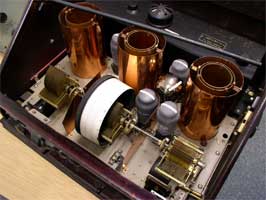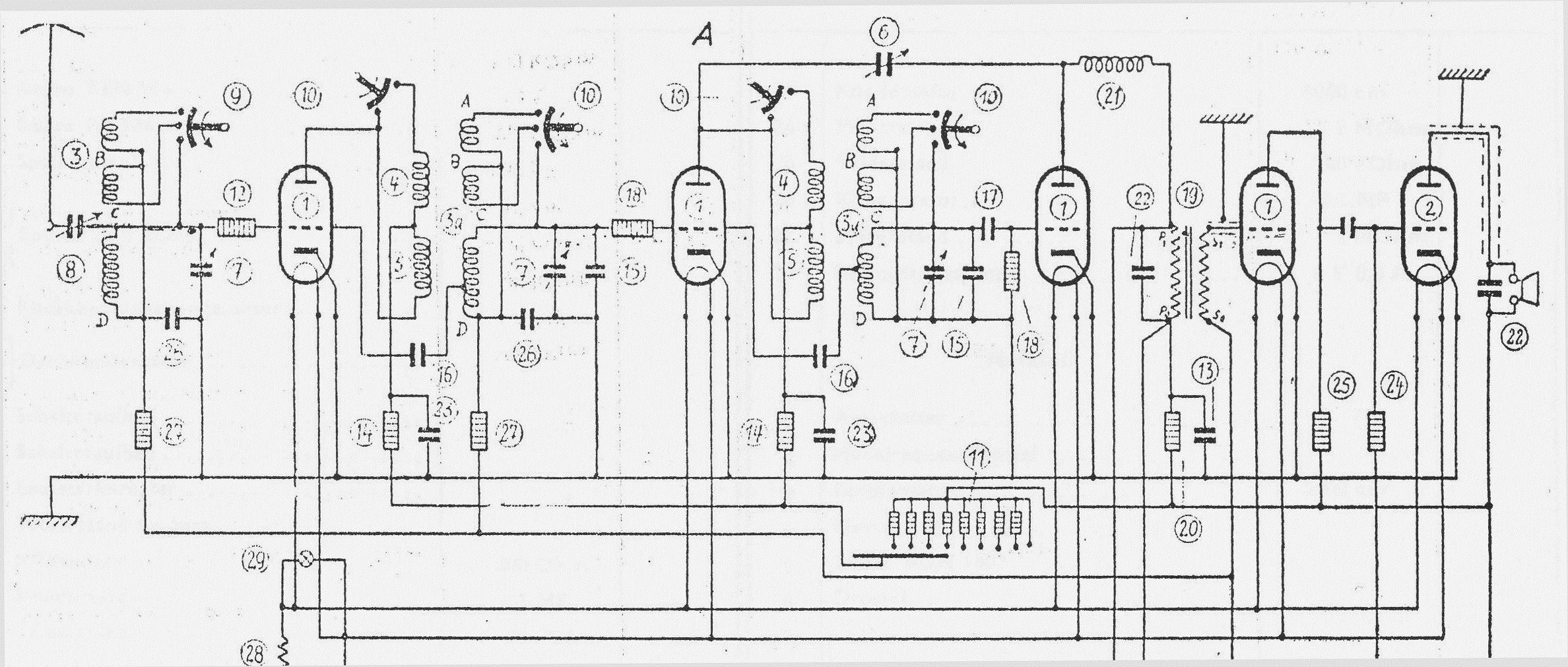 The T9W receiver, designed by Erich Zepler and Ernst Klotz in 1927/8, was the first “all mains” broadcast-receiver marketed by Telefunken. An example owned by Electronics and Computer Science, in working order, was transferred to Southampton from the Technical Institute of Bochum in Germany after Eric Zepler’s death in 1980.
The T9W receiver, designed by Erich Zepler and Ernst Klotz in 1927/8, was the first “all mains” broadcast-receiver marketed by Telefunken. An example owned by Electronics and Computer Science, in working order, was transferred to Southampton from the Technical Institute of Bochum in Germany after Eric Zepler’s death in 1980.
Copper cylinders provided screening for the transformer coils. In the construction of this receiver the workmanship was of high quality. However, the external appearance lacked styling. Seemingly Telefunken regarded its receivers as industrial equipment rather than pieces of domestic furniture. This receiver was put on sale at a price of 755 reichmarks, which would have been expensive for furniture. For comparison, when the Nazi regime came to power it ordered the production of a People’s Receiver that would sell at a subsidised price of 35 reichmarks. That was roughly equal to the average weekly wage at the time.
The first four stages, using REN1104 triode valves, comprised two neutralised RF stages, a grid detector and an audio amplifier. The power output stage used a RE134 triode valve. The aerial was coupled to the first RF stage by a variable capacitor. Switching between coils in parallel was used to select the waveband (200-400, 350-700 or 600-2000 metres). Feedback from a tapping on the grid coil of the next stage was used for neutralisation. The gain of the RF stages was controlled by a rheostat in the HT feeds. The three tuning capacitors were ganged. The leaky-grid detector was transformer coupled to the first AF stage. Grid bias for all of the valves except the detector was derived from a potential divider between HT- and the chassis. An external loudspeaker was used.
